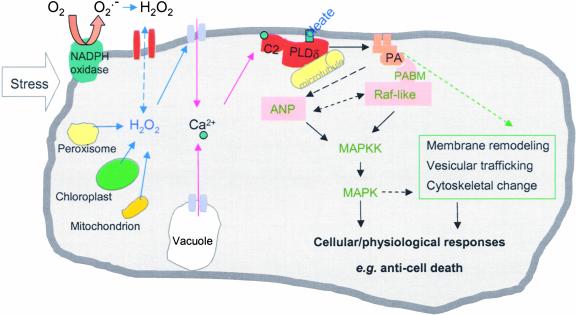Figure 8.
Proposed Model Depicting the Activation and Function of PLDδ and PA in the Cell's Response to H2O2.
Stress stimulates the cellular production of H2O2 that activates PLDδ associated with the plasma membrane and the microtubule cytoskeleton. Potential mediators in the activation include an increase in cytosolic Ca2+ and oleic acid in the membrane. Such interactions increase the affinity of PLDδ to its substrates, stimulating lipid hydrolysis and PA production. PA may bind to target proteins, such as Raf-like MAPK kinase kinase (MAPKK), that contain a PA binding motif (PABM). Such binding may lead to the activation of MAPK cascades, and PA also may be involved directly in the regulation of ANP. In addition, PA may function by modulating membrane trafficking and remodeling. These interactions modulate the cell's ability to respond to oxidative stress and decrease cell death. Dashed lines denote undocumented, hypothetical interactions.

